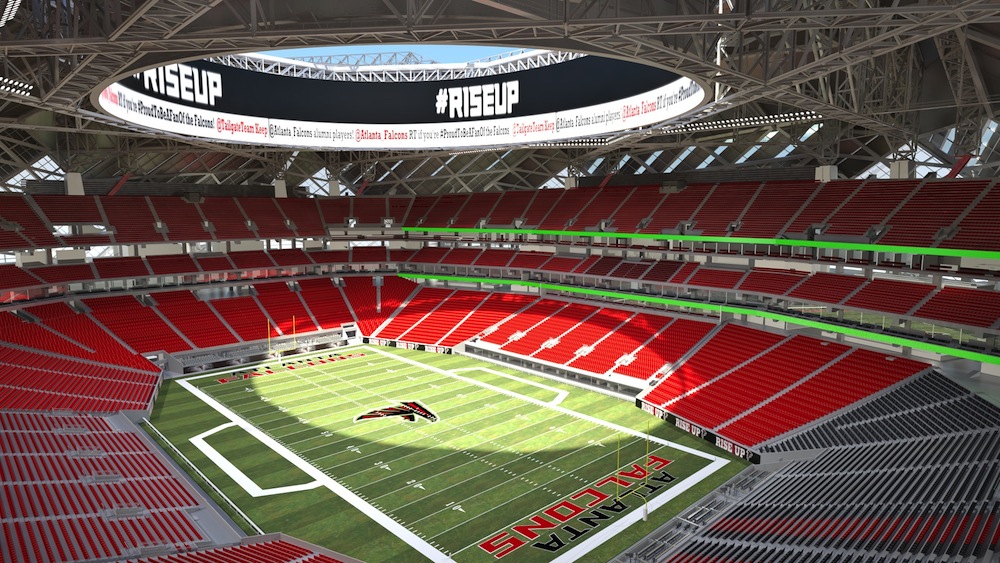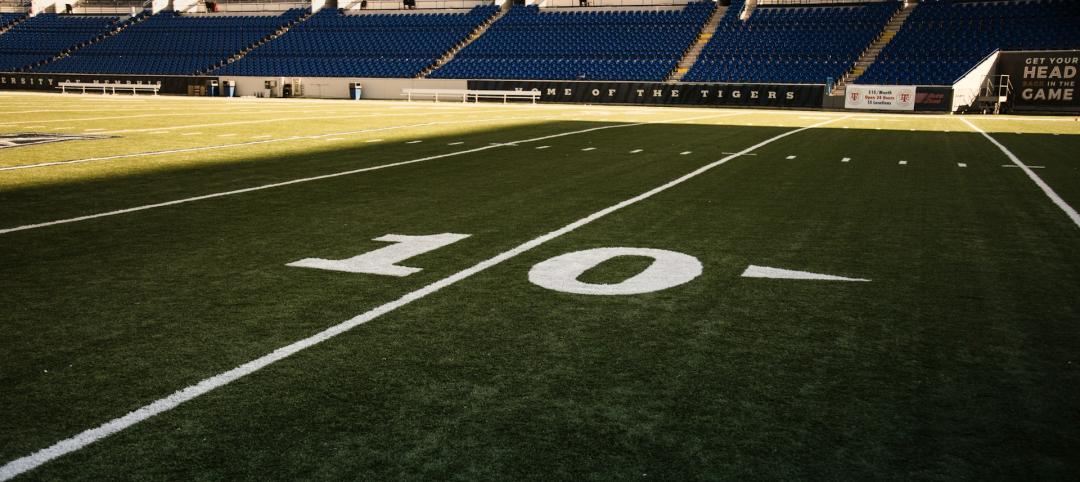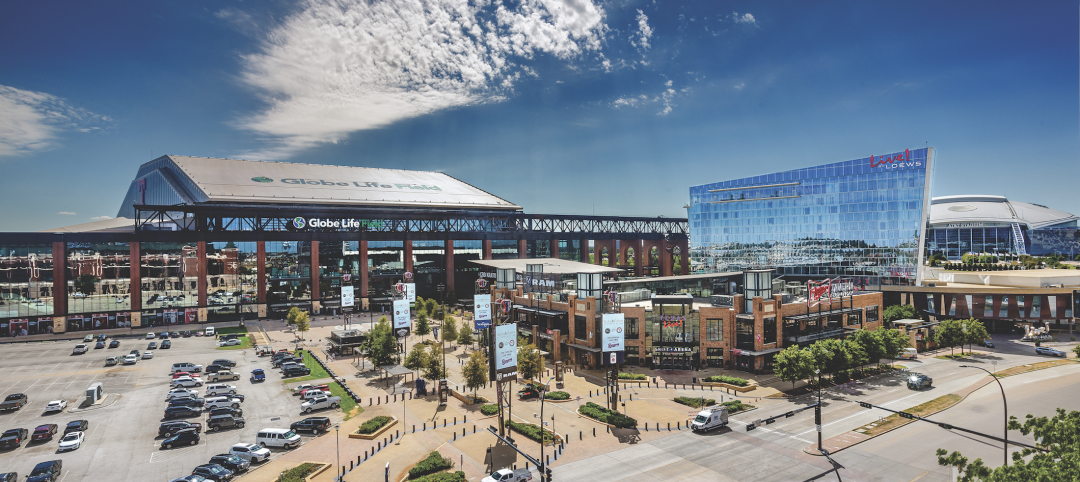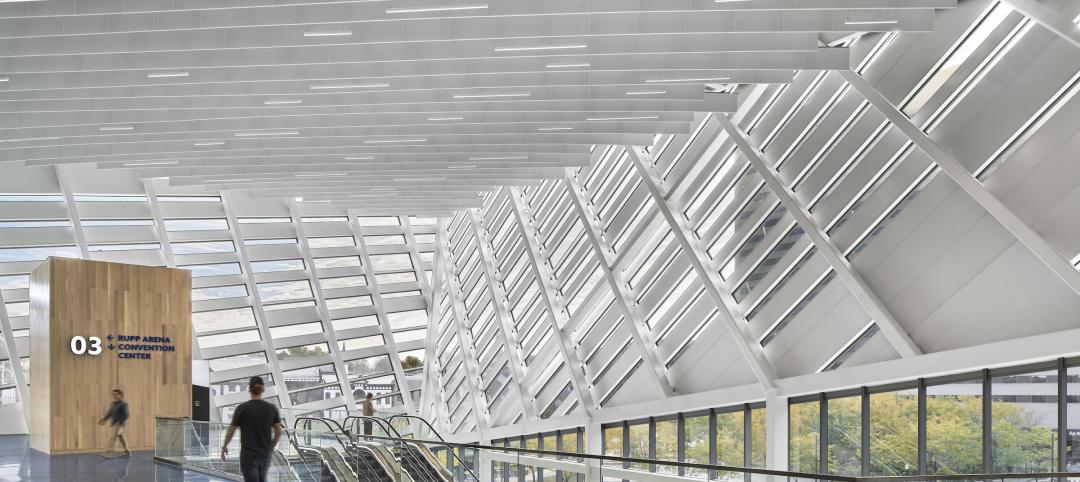The benefits of having a sports facility in a community are many—from a shared sense of public pride to increased job opportunities to enhanced real estate values—but perhaps surprisingly, immediate profitability is not among them. Whether minor league ballpark or Olympic-caliber stadium, the economics of athletic facilities is an intricate business, involving franchise fees, broadcast agreements, sponsorships, public funding, licensing issues, and more. Because of this complicated scenario, a realistic understanding of the budget is critical, and must be determined well before the architectural design phase begins.
Cost modeling, an algorithm-based process of estimating the complex expenses of a construction project by analyzing fixed and variable factors, can provide the clarity and direction that get a project off on the right financial foot, putting the facility development on the road to profitability. While there are two established approaches to this—one focuses on cost-per-seat, the other on cost-per-square-foot—there are compelling arguments why relying on just one of these methods may lead to inaccurate conclusions.
While there are two established approaches to this—one focuses on cost-per-seat, the other on cost-per-square-foot—there are compelling arguments why relying on just one of these methods may lead to inaccurate conclusions.
The reason for this is apparent to anyone who has walked through an arena turnstile in the past five years: Modern athletic facility design is far from standardized. What was once simply a playing field surrounded by bleachers, today’s facilities have evolved into entertainment destinations where the competition is not just between teams on the gridiron, diamond, or rink, but also for customers at the multitude of concessions that now populate these venues.
Restaurants and bars, luxury suites, and fan-experience features all make significant contributions to the bottom line of the facility’s business. Such diverse amenities frequently require sophisticated technologies that go beyond the normal parameters of design, so it follows that they also defy conventional cost-modeling techniques.
As sports seasons are limited in length, facility operators look to supplement their income by scheduling revenue-generating events throughout the entire year. To do so, the venue must be designed to accommodate a variety of activities, from concerts to conventions. When a building is multi-functional and doesn’t fit a well-defined profile of a single-purpose structure, using cost-modeling with a narrow focus simply isn’t a suitable approach.
It’s not just the bells and whistles aspects of arenas that keep cost-modeling experts on their toes; the basic building program can prove resistant to seat- or square-foot-based study, as well. Something as fundamental as the location of a facility can dictate certain architectural measures that disrupt strictly formulaic analysis. Examples of such circumstances abound: facilities in earthquake-prone regions will require seismic engineering; those in northern climes must contend with snow loads on the roof; where extreme heat and humidity prevail, solar control might take the form of an expensive retractable roof or a more affordable passive shading system. All these present estimating challenges which cannot be resolved though a single mode of cost-modeling without risk.
Paradoxically, even the seating plan may confound traditional cost-modeling practices. Particularly with the increasing emphasis on luxury boxes as a source of revenue, the amount of general admission seating has become an economically fraught issue.
Responsive cost models are key
As early as possible during conceptual design stages, a responsive cost model should be assembled so that building elements can be isolated, interrogated, and priced individually. Fortunately, most facility designers will have sufficient experience to be able to respond constructively to detailed design questions asked early on in the process. Accordingly, an effective cost model should be organized by building elements—from foundations systems to interior finishes to A/V and special tech systems—in order to create comprehensive cost scenarios.
There are significant advantages to implementing a more detailed cost modeling technique. Unique facility design and cost challenges, which are often overlooked in comparative cost modeling, can be illuminated and addressed early on. At early stages, the conceptual design is still quite flexible and malleable and responses to cost issues can be modelled and priced in relatively short order if the baseline cost model has been properly prepared. And, perhaps most important, conversations about the facility costs can be addressed with specific data rather than conjecture and biased opinions.
Obviously this process places demands on design and project teams, which are more commonly encountered at later stages of the process. However, an added virtue of implementing discovery early on is that it engages the entire team in an informed discussion about costs at a point in the design where changes can be affected with minimal effort and maximum impact.
Cost modeling is a powerful tool for planning sports facilities, but to reap the rewards it offers, it’s important to understand the limits, as well as the capabilities, of the process. With architects continuously upping the ante on facility designs, relying on per-square-foot methods can be a costly mistake. Responsive modeling is critical. Experience and strong relationships are key to engendering full “buy-in” for these methods with all stakeholders and team members. But when everyone is on board, this process can actually promote and improve trust, foster teamwork, and create a sense of shared responsibility to ensure a successful project outcome.
About Peter Knowles: Peter Knowles is executive vice president of Rider Levett Bucknall North America. Based in Denver, he is a member of Rider Levett Bucknall’s senior leadership team responsible for operations of the North American practice. Peter joined the firm in 1987. As a Chartered Quantity Surveyor with over 30 years of experience, he has particular expertise in healthcare and sports facilities, and has worked on aviation, commercial, educational, healthcare, hospitality, mission critical, research and technology, and public assembly projects in the United States, Asia, and Europe. Peter specializes in the management of construction cost and time of projects. A Fellow of the Royal Institution of Chartered Surveys, Peter is also a member of the Australian Institute of Quantity Surveyors and the Association for the Advancement of Cost Engineering.
About Steve Kelly: Steve Kelly is an associate principal at Rider Levett Bucknall and leads the firm’s Seattle office. With more than 29 years of experience in cost management, Steve has worked on behalf of building contractors and cost consulting firms providing his expertise in preparing bills of quantities, analyzing projects by functional component, evaluation of change orders and post construction management control. In addition to his specialized expertise in the sports sector, Steve has worked on numerous projects in sectors ranging from education and hospitality to healthcare infrastructure and commercial. He is also a Member of the Royal Institution of Chartered Surveyors (MRICS).
Related Stories
Mixed-Use | Apr 9, 2024
A surging master-planned community in Utah gets its own entertainment district
Since its construction began two decades ago, Daybreak, the 4,100-acre master-planned community in South Jordan, Utah, has been a catalyst and model for regional growth. The latest addition is a 200-acre mixed-use entertainment district that will serve as a walkable and bikeable neighborhood within the community, anchored by a minor-league baseball park and a cinema/entertainment complex.
Cultural Facilities | Apr 8, 2024
Multipurpose sports facility will be first completed building at Obama Presidential Center
When it opens in late 2025, the Home Court will be the first completed space on the Obama Presidential Center campus in Chicago. Located on the southwest corner of the 19.3-acre Obama Presidential Center in Jackson Park, the Home Court will be the largest gathering space on the campus. Renderings recently have been released of the 45,000-sf multipurpose sports facility and events space designed by Moody Nolan.
Sports and Recreational Facilities | Apr 2, 2024
How university rec centers are evolving to support wellbeing
In a LinkedIn Live, Recreation & Wellbeing’s Sadat Khan and Abby Diehl joined HOK architect Emily Ostertag to discuss the growing trend to design and program rec centers to support mental wellbeing and holistic health.
Sports and Recreational Facilities | Mar 14, 2024
First-of-its-kind sports and rehabilitation clinic combines training gym and healing spa
Parker Performance Institute in Frisco, Texas, is billed as a first-of-its-kind sports and rehabilitation clinic where students, specialized clinicians, and chiropractic professionals apply neuroscience to physical rehabilitation.
Sports and Recreational Facilities | Mar 7, 2024
Bjarke Ingels’ design for the Oakland A’s new Las Vegas ballpark resembles ‘a spherical armadillo’
Designed by Bjarke Ingels Group (BIG) in collaboration with HNTB, the new ballpark for the Oakland Athletics Major League Baseball team will be located on the Las Vegas Strip and offer panoramic views of the city skyline. The 33,000-capacity covered, climate-controlled stadium will sit on nine acres on Las Vegas Boulevard.
Sports and Recreational Facilities | Feb 19, 2024
Sports stadium developers sweeten projects with affordable housing to gain support
In recent years, sports stadium developers have been including affordable housing in their projects to win support from local governments and community activists.
Mixed-Use | Jan 26, 2024
Entertainment districts are no longer just about sports, dining, and music
Diversity of experiences is what makes entertainment districts tick these days. That’s one reason why offices continue to be included in district proposals. And in their efforts to emerge as year-round destinations, more districts are either including residential in their proposals or supporting existing districts with housing.
Sports and Recreational Facilities | Dec 15, 2023
San Antonio Spurs’ new practice facility aims to help players win championships and maintain well-being
Designed by ZGF, the Victory Capital Performance Center uses biophilic design to promote better health and wellness on and off the court.
Giants 400 | Oct 17, 2023
Top 70 Sports Facility Construction Firms for 2023
AECOM, Turner Construction, Clark Group, Mortenson head BD+C's ranking of the nation's largest sports facility contractors and construction management (CM) firms for 2023, as reported in Building Design+Construction's 2023 Giants 400 Report.
Giants 400 | Oct 17, 2023
Top 130 Sports Facility Architecture Firms for 2023
Populous, Gensler, HOK, and HKS head BD+C's ranking of the nation's largest sports facility architecture and architecture/engineering (AE) firms for 2023, as reported in Building Design+Construction's 2023 Giants 400 Report.

















